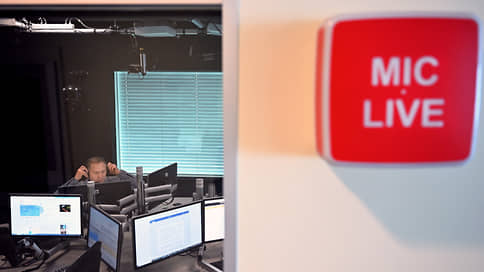Radio broadcasters managed to replace most of the foreign equipment
[ad_1]

Broadcasters in 2023 managed to replace most of the foreign equipment that fell under US restrictions. Real problems persist only with coaxial cables, according to the Russian Radio Academy. Market participants clarify that cables can be obtained from China, but they are one and a half times more expensive than before; deliveries take a long time and are unreliable. Some other equipment, such as feeders, remains exclusively imported. According to experts, it will take from two to five years to create domestic cable production.
“Kommersant” got acquainted with the industry report “Radio Broadcasting in Russia 2022–2023”, prepared by the Foundation for the Promotion of Radio Broadcasting “Russian Academy of Radio” (RAR) with the support of the Ministry of Digital Development. It follows from the document that domestic manufacturers have taken a dominant position in the market for transmitters, transmitting antennas and other equipment for companies in the radio broadcasting industry. The industry “managed to mitigate the risks of technological isolation” after the introduction of sanctions, the document says. However, it clarifies, “due to the lack of domestic manufacturers of high-frequency coaxial cables, product deliveries are still difficult and highly dependent on the imposed sanctions restrictions, and the price is tied to foreign exchange rates.”
Coaxial cables – the most common radio frequency cables for transmitting radio and video signals. The conductors of the coaxial cable are located along the same axis, so this design has no external electromagnetic field: the loss of the transmitted signal is minimal and also has a high degree of protection against interference.
The Ministry of Digital Development noted that Russian manufacturers of equipment in the field of radio broadcasting continue to offer “new technical solutions for import substitution of foreign equipment in order to fully cover the needs of the market.” RAR did not respond to Kommersant’s request.
Gazprom-Media Radio (manages Avtoradio, Radio Energy, Humor FM, Radio Romantica, etc.) confirmed that they replaced the radio transmitters at the stations with Russian ones. “Despite certain difficulties with other components, for example with FM processors, all the launches that we have planned will be completed on time, without significant delays,” assured the deputy general director of the organization, Grigory Mikhailov. According to him, Gazprom Media does not yet experience a shortage of coaxial cables, but feeders (an auxiliary device for transmitting a radio frequency signal from an antenna to a receiver and vice versa) are exclusively imported.
Russian players receive coaxial cables from China, Mr. Mikhailov clarified, but delivery times have lengthened significantly and have become not very reliable: “If previously the forecasts were with a horizon of a month and a half, now it’s up to six months, and as a result, the delivery may fail, there may not be the terms of the contract have been fulfilled and suppliers will invoke force majeure.” The holding orders equipment through intermediaries, notes Mr. Mikhailov, who buy it in China, and “then, most likely, they come up with schemes that extend delivery times.” The cost of equipment has also increased – one and a half to two times. In VGTRK (manages Radio Russia, Mayak, Vesti FM, Radio Culture), the European Media Group (Europe Plus, Road Radio, Retro FM, New Radio) answered “Kommersant”.
The supply of a significant part of radio broadcasting equipment was limited due to US sanctions, a Kommersant source in the industry explains: “This happened after the outbreak of hostilities in Ukraine, and, as we all remember, with the wording ‘sensitive for the defense industry’.” Existing equipment manufacturers cannot completely cover the demand in Russia, Kommersant’s interlocutor claims: radio stations cannot use two-wire cables, they significantly reduce the quality of the transmitted signal, and it will take two to five years to develop your own technology. According to Kommersant’s source, the most effective would be to create a joint venture with a supplier from China. However, Chinese manufacturers rarely and reluctantly undertake such projects.
[ad_2]
Source link





